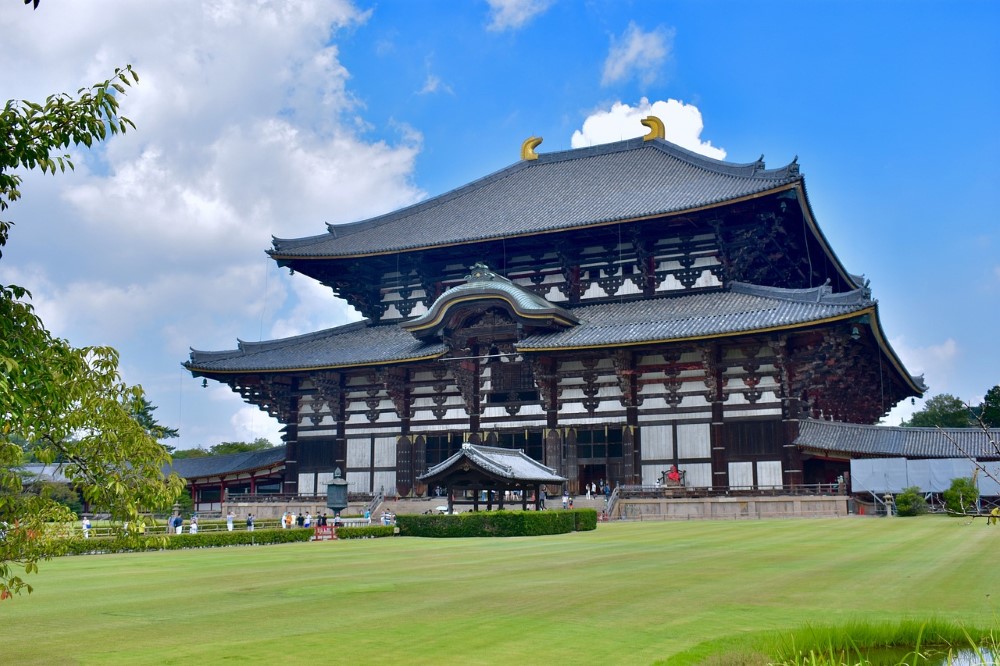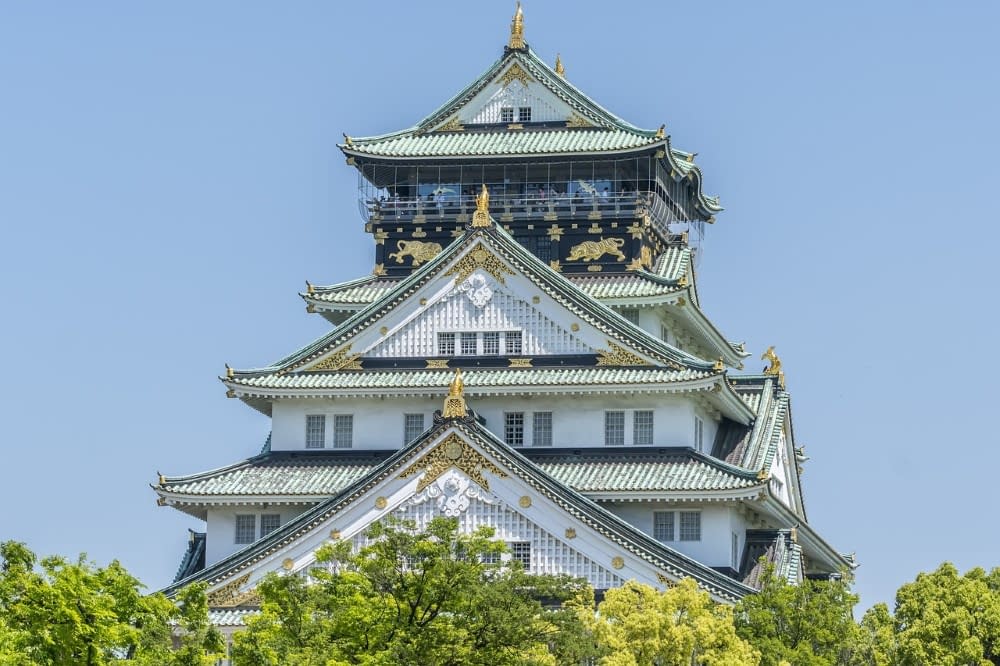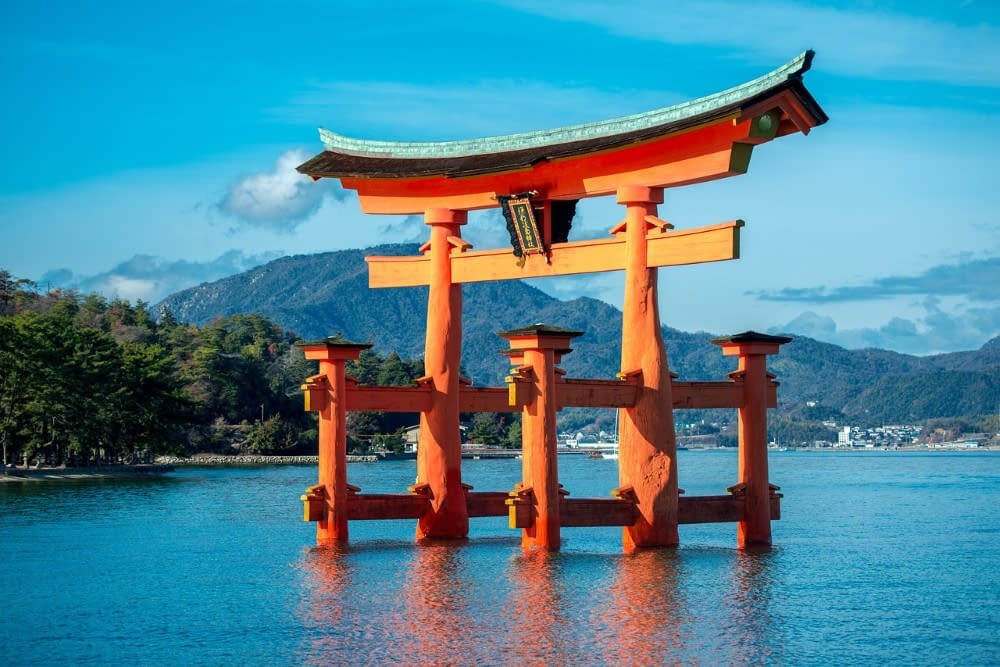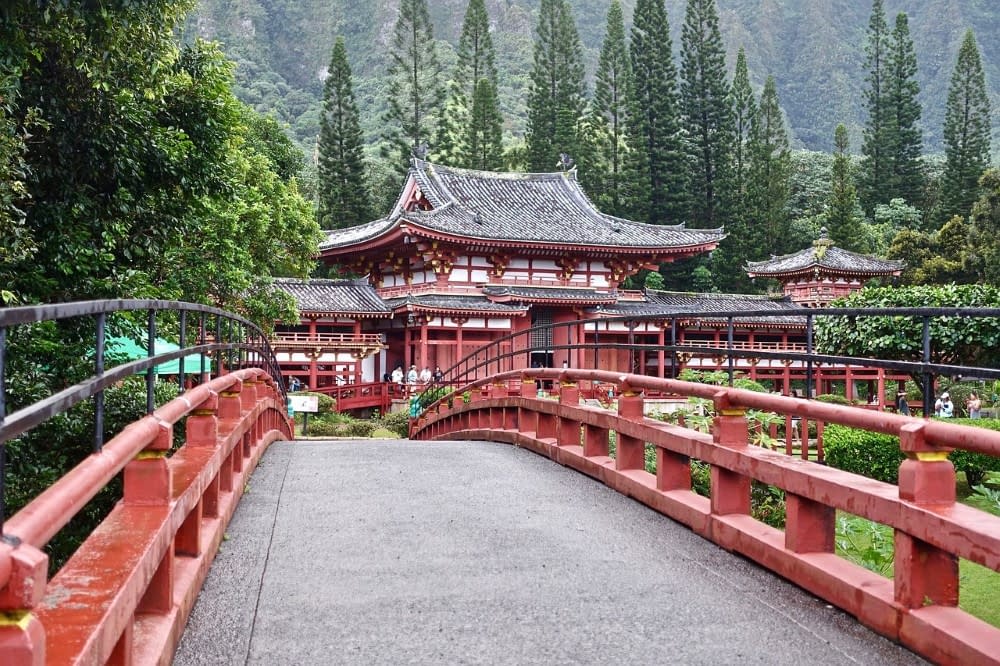- Life & Culture
A Guide to Traditional Japanese Architecture
The Significance of Traditional Japanese Architecture
Japanese architecture beautifully marries aesthetics with functionality and is celebrated for its unique flair.
Deeply rooted in Japan’s history and culture, traditional designs spotlight the Japanese people’s exceptional craftsmanship and distinct design philosophies.
These structures, predominantly crafted from natural resources, not only echo Japan’s illustrious past but also its dedication to eco-friendliness. From the majestic ancient temples to the understated tea houses, each building tells a story that offers an insight into Japan’s rich cultural history.
The Blend of Tradition and Modernity
One of the most enchanting aspects of Japanese architecture is its effortless blend of the past with the present. Despite the fast pace of urbanisation and tech progress, Japan has held onto its architectural essence.
Classic features like tatami mats, sliding doors, and timber frameworks beautifully complement modern high-rises and cutting-edge designs. This harmony is particularly visible in cities like Kyoto, where age-old shrines proudly coexist with modern structures.
This synthesis not only honours Japan’s age-old housing styles but also sets the stage for a future that is proud of its history.
Influence of Isolation and External Cultures
Japan’s geographical seclusion historically had a profound impact on its architectural evolution.
For many eras, the country stayed largely isolated, letting its native architecture blossom without major foreign interference. Yet, when Japan welcomed global interactions, it started integrating architectural nuances from China, Korea, and eventually the West. This fusion birthed a distinct architectural style that married the finest of all realms.
Presently, while the core of traditional Japanese structures is preserved, imprints of foreign cultures are evident, highlighting Japan’s ability to adapt and its robustness amidst transformations.

Historical Evolution of Traditional Japanese Architecture
Japan’s architectural journey paints a vivid picture of its rich cultural and historical story. From time-honoured shrines to towering modern skyscrapers, Japan’s buildings offer a unique fusion of age-old traditions and forward-thinking innovation.
At the heart of traditional Japanese architecture lies a deep reverence for nature, leading to designs that seamlessly blend with their environment. While Japan has absorbed various influences over time, its architectural spirit remains unmistakably unique.
Ancient Japan Architecture
In Japan’s formative years, its people built rudimentary pit homes and raised granaries. Crafted mainly from timber and thatch, these early structures hinted at what would become iconic traditional Japanese architecture styles. Their design prioritised adaptability, catering to Japan’s varied climate, and setting the stage for Japan’s renowned vernacular architecture.
Influence of Buddhism and Asian Cultures
The 6th-century arrival of Buddhism dramatically transformed Japan’s architectural scene. Buddhist temples, marked by their detailed wooden frameworks and majestic pagodas, rose in prominence.
Drawing inspiration from neighbouring Asian nations, notably China and Korea, these temples boasted intricate carvings and often sat amidst tranquil gardens, encapsulating the religion’s profound spiritual ethos.
Medieval Architecture in Japan
The medieval era saw Japan’s architecture evolve to reflect the period’s socio-political shifts.
Castles, strongholds, and samurai homes became architectural mainstays. Strategically perched on hills or encircled by water, these structures were not only status symbols; they were fortresses.
Their designs prioritised durability, featuring robust stone bases and layered wooden fortifications.

Chinese Styles and the Kamakura Era
The Kamakura period heralded the ascendancy of the samurai class, ushering in distinct architectural nuances. Drawing cues from Chinese aesthetics, buildings from this era sported sweeping roofs, detailed wooden grids, and sprawling courtyards.
The focus was on striking a harmony between beauty and utility, resulting in structures that were both visually captivating and functionally robust.
Early Modern Japanese Architecture
Japan’s shift into the early modern age was characterised by a melding of local and foreign architectural sensibilities.
While the quintessential Japanese design ethos persisted, European architectural touches began making their mark, especially in bustling urban centres. This era also introduced the ‘machiya’ or townhouses, versatile structures that merged living and business spaces.
The Momoyama Era and Edo Period
The tranquil Momoyama and Edo periods, marked by peace and limited external contact, saw architecture that mirrored Japan’s introspective stance.
Grandiose castles and elaborate tea houses dominated, their designs dripping in luxury, featuring plush interiors and sophisticated garden designs, all aimed at flaunting the affluence and might of the elite.
Modern Japanese Architecture
The 20th century marked a transformative phase for Japanese architecture. As Japan engaged more with the West, a wave of innovative designs emerged, blending age-old traditions with contemporary methods.
Modern materials like concrete, steel, and glass gained popularity, but the soul of traditional Japanese design, with its nature-centric and minimalist ethos, remained undisturbed.
Western Influences and the Meiji Era
The Meiji period epitomised Japan’s swift march towards modernisation and its opportunity to embrace Western architectural influences. Structures from this era exhibited a harmonious blend of Japanese and Western ideas, with brick and stone structures becoming increasingly popular.
This transformative era set the foundation for Japan’s architectural prowess in the 20th century, cementing its reputation as a global architectural titan.

Contemporary Japanese Buildings
Japan’s architectural narrative is a fascinating tale of harmonising age-old traditions with modern innovations. The contemporary structures in Japan stand as a beacon of the nation’s adaptability, creativity, and leadership in the architectural realm.
While the echoes of traditional Japanese design are unmistakable, there’s an evident embrace of novel materials, cutting-edge technologies, and fresh design philosophies. The architectural landscape of Japan is adorned with buildings that are not only purposeful but also visually striking, resonating with Japan’s foundational values while redefining its architectural ethos.
Post-WWII Developments
The repercussions of World War II were a watershed moment for Japan, reshaping its societal and architectural fabric. The war’s devastation necessitated immediate rebuilding.
This era witnessed a wave of inventive designs tailored to meet the demands of a swiftly urbanising society. The skyline began to be punctuated by towering buildings, streamlined transport centres, and versatile communal spaces.
Amidst this wave of modernity, there was a deliberate endeavour to insert aspects of Japan’s classic housing aesthetics. The architectural dialect that emerged was a distinctive blend, a testament to Japan’s tenacity and its vision for the future.
Modern Innovations and Global Recognition
The architectural odyssey of Japan in the past few decades is truly commendable. Trailblazing architects have unveiled designs that defy traditional boundaries.
Be it structures that meld flawlessly with nature or those harnessing avant-garde tech for eco-friendliness, Japan’s contemporary structures mirror its forward-thinking spirit. This architectural prowess hasn’t gone unnoticed on the global stage, with numerous Japanese architects being lauded for their groundbreaking contributions.
Whether it’s a heritage structure rejuvenated with modern comforts or a futuristic skyscraper rooted in age-old design principles, Japan consistently raises the bar in architectural brilliance.

Diverse Styles of Traditional Japanese Architecture
The architectural panorama of Japan is a vibrant mosaic of styles, each narrating its own tale of history, function, and beauty. From the majestic imperial palaces to the humble countryside abodes, the spectrum of traditional Japanese architecture speaks volumes about the nation’s rich cultural tapestry.
While each style boasts its distinct design nuances, they all resonate with a shared ethos: a profound respect for nature and an aspiration for harmonious existence.
Shinden-Zukuri: Aristocratic Residences of the Heian Era
In the Heian era, when the aristocratic class held sway, their architectural preferences mirrored their stature. The Shinden-Zukuri style, marked by expansive mansions encircling central courtyards, became the hallmark of the elite.
These homes, often nestled amidst picturesque gardens, championed a sense of openness and flow. Features like sliding doors and elevated wooden platforms were staples, enabling inhabitants to relish the natural splendour enveloping their residences.
Buke-Zukuri: Samurai Dwellings of the Kamakura Era
The ascendancy of the samurai during the Kamakura period ushered in the Buke-Zukuri style, mirroring their martial ethos.
While these homes were more austere compared to the lavish aristocratic residences, they were crafted for pragmatism. Robust wooden supports, reinforced walls, and thoughtfully planned layouts ensured these homes stood resilient against potential adversaries.
Yet, these homes, in their quintessential Japanese essence, also celebrated nature, often integrating gardens and water features.
Shugden-Zukuri: Everyday Structures with Buddhist Influences
As Buddhism permeated the Japanese landscape, the Shugden-Zukuri style emerged, catering to the daily requisites of the masses. Predominantly seen within monastic settings, these structures were modest yet purposeful. They often encompass shared spaces for prayer, contemplation, and routine chores.
Their design, with timber frameworks and thatched canopies, epitomised the architecture Japan is famed for, underscoring eco-friendliness and environmental harmony.

Shoin-Zukuri: The Zen Influence
Zen Buddhism’s philosophical depth profoundly influenced Japanese architecture, birthing the Shoin-Zukuri style. Predominantly seen in temples and places of meditation, this style offered the virtues of simplicity and peace.
Distinctive elements like tatami matting, sliding fusuma partitions, and the art-displaying “tokonoma” alcove were integral. The overarching design intent was to create a tranquil ambience, ideal for reflection and spiritual immersion.
Sukiya-Zukuri: The Tea Master’s Ethos
The ceremonial art of tea-drinking inspired the Sukiya-Zukuri architectural style. Typically manifesting as tea houses or the homes of tea connoisseurs, these spaces were intimate sanctuaries designed for introspection and nature’s appreciation.
Employing natural materials, a rustic charm, and a keen eye for craftsmanship, every angle of this style, from timber selection to spatial arrangement, was meticulously curated to elevate the tea-drinking ritual.
Gassho-Zukuri: The Thatched Roof Houses
In Japan’s snow-laden regions, the Gassho-Zukuri architectural identity emerged as a pragmatic response to the challenging weather.
Defined by their sharply pitched thatched roofs, these homes were adept at withstanding heavy snow accumulations. The roof’s silhouette, reminiscent of hands in prayerful ‘gassho’ gesture, lent the style its moniker.
Beyond their utilitarian design, these dwellings also celebrated Japan’s age-old construction methods, with timber skeletons and shared familial spaces.

Characteristics Defining Traditional Japanese Architecture
The architectural narrative of Japan, with its diverse styles and designs, embodies the nation’s cultural heart and historical journey. Even as architectural forms have transformed over time, there are many notable traits that encapsulate the quintessence of traditional Japanese architecture.
Rooted deeply in Japan’s past, philosophy, and natural setting, these traits illuminate the nation’s core values and design ethos.
The Dominance of Wood
Timber has been the cornerstone of traditional Japanese architecture, thanks to Japan’s lush forests. This abundant resource was employed in crafting everything, from majestic temples to quaint residences.
The allure of wood, with its inviting warmth, adaptability, and organic essence, bestows a unique natural identity to Japanese architecture. Beyond its visual appeal, wood’s innate shock-absorbing properties made it a favoured choice due to earthquakes being commonplace in Japan.
The intricate art of interlocking wooden beams without nails, emblematic of Japan’s age-old construction methods, underscores the nation’s deep respect for this material and its dedication to sustainable practices.
The Connection with Nature
A hallmark of Japanese architecture is its intimate bond with nature. Be it a classic dwelling with sliding panels revealing a tranquil garden or a temple cradled by mountains, built structures invariably resonate with their natural milieu.
This nature-centric approach transcends mere aesthetics; it echoes Japan’s Shinto and Buddhist tenets that venerate the natural world. Architectural principles, from optimising a structure’s orientation for ideal lighting to harnessing natural elements, converge to blur the lines between indoor and outdoor spaces.
The Role of Religion and Spirituality
The spiritual tapestry of Japan has been instrumental in moulding its architectural ethos. Shinto sanctuaries, Buddhist temples, and contemplative Zen gardens are more than mere spiritual havens; they are architectural gems that encapsulate Japan’s religious convictions.
The spatial arrangements, material choices, and even the encompassing landscapes of these buildings are meticulously curated to nurture spiritual introspection and connection. Elements like the raked gravel in Zen gardens or the iconic torii gates of Shinto shrines transcend mere design; they symbolise profound spiritual philosophies.
This harmonious blend of architecture and spirituality accentuates the richness and intricacy of Japan’s cultural mosaic.

Renowned Modern Japanese Architects and Their Contributions
The global architectural scene has been enriched by numerous trailblazers, and Japan has proudly introduced several of these visionary minds.
These architects, through their distinct viewpoints and pioneering designs, have not only moulded the contours of traditional Japanese architecture but have also etched a lasting impression on worldwide architectural paradigms. Their masterpieces, often marrying the age-old with the avant-garde, echo Japan’s cherished cultural tenets whilst challenging design frontiers.
Arata Isozaki: Merging the Past and Present
Arata Isozaki emerges as a paragon of adaptability in the realm of architecture. His oeuvre, spanning various eras, unfailingly marries the essence of traditional Japanese architecture with modern-day sensibilities. Whether it’s a cutting-edge city skyscraper or a structure echoing age-old traditions, Isozaki’s creations resonate with his conviction in the significance of historical context.
A prime example of his architectural prowess is the Oita Prefectural Library. Its contemporary exterior, coupled with interiors echoing Japan’s age-old residential designs, stands as a tribute to Isozaki’s adeptness in bridging historical epochs.
Tadao Ando: The Zen Master of Architecture
Often dubbed the ‘Zen maestro of architecture’, Tadao Ando is celebrated for his pared-down designs that deeply align with Japan’s spiritual and aesthetic ethos. His penchant for concrete, harmonised with elements like water and illumination, crafts ambiences that oscillate between tranquillity and potency.
Structures like the Church of the Light in Osaka or the Row House in Sumiyoshi bear testimony to Ando’s profound bond with nature and his aspiration to curate spaces that inspire introspection. While his creations are anchored in traditional Japanese architectural tenets, they resonate globally, earning him plaudits and reverence across borders.
Itsuko Hasegawa: Pioneering Female Architect
Defying conventions in a sphere largely dominated by men, Itsuko Hasegawa has etched her distinct mark with her forward-thinking and eco-friendly designs. Her architectural philosophy, which underscores community engagement and ecological balance, has birthed buildings that are as functional as they are visually enchanting.
The Shonandai Cultural Centre, one of her crowning achievements, exemplifies her flair for fusing Japan’s local architectural essence with contemporary design tenets. Beyond her architectural feats, Hasegawa’s trailblazing journey as a female architect has galvanised many to challenge established norms and redefine boundaries.

Conclusion: The Ever-Evolving World of Japanese Architecture
Venturing into the beautiful world of Japanese architecture, it is not surprise that the nation’s architectural wonders are more than mere constructs of timber, stone, or cement; they encapsulate its illustrious past, cultural ethos, and cherished values.
From the regal architecture of bygone eras to today’s groundbreaking designs, Japan’s architectural heritage underscores its tenacity, ingenuity, and deep respect for nature. The legacies of its illustrious architects, each with their distinct flair and vision, make this more prominent.
What can Interac offer you?
If you are interested in Japanese language or culture and can speak English, there are plenty of opportunities available to relocate to Japan and become an Assistant Language Teacher (ALT). It is a great way to gain teaching experience whilst also having the opportunity to move somewhere completely new and different!
There are plenty of opportunities all over Japan to get involved in, so if this sounds like something that might interest you, take a look at our application process!
